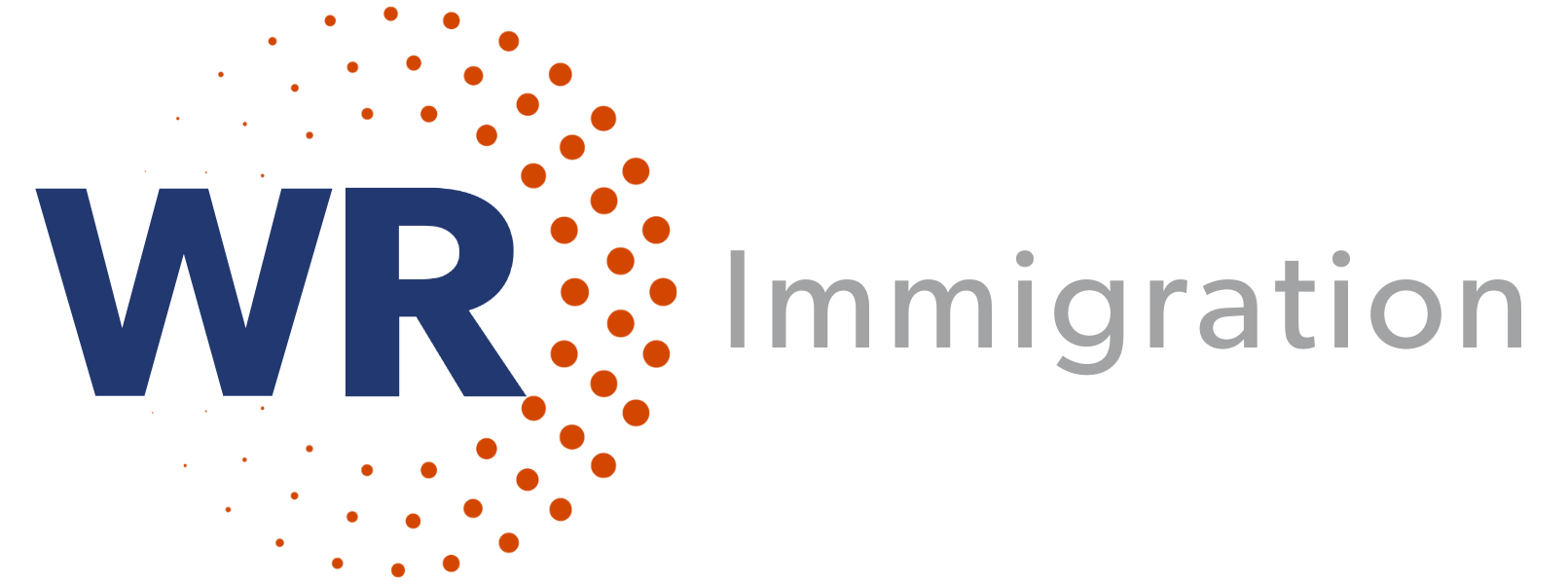I have been Provisionally Accepted—Do I need a lawyer? A deceptively complex program involving a “lottery within a lottery”.
By Bernard Wolfsdorf & Naveen Bhora
The U.S. Department of State (“DOS”) has advised that: DV-2024 Entrants from last year) can check their confirmation information. This is for the DV-lottery registration period that closed in November 2022. These DV-lottery Entrants should keep their confirmation number until at least September 30, 2024.
This is because in the past the Department of State has notified as 100,000 “winners” being individuals who had entered Diversity Immigrant Visa Program (“DV Program”) lottery (“diversity lottery”) advising that they had been selected for further processing.
Every year in September, I get several calls from frantic despondent “lottery winners” advising them that not only did not get a green card, but their nonimmigrant student or other status has expired, and they have been ordered to leave.
This is often because many diversity lottery “winners” expect the next steps in the process to be simple. However, with only 55,000 diversity immigrant visas set aside for these “winners” and their derivate family members, almost half of the winners will be disappointed when their diversity immigrant visa applications fail, either because they didn’t succeed in the process of proving eligibility, or because their lottery entries contained fatal technical errors, in addition to having to overcome grounds of inadmissibility, such as the public charge criteria.
The DOS has cautioned “winners” regarding the post-diversity lottery-selection process: “If you receive notification … that you have been selected for further processing … you must successfully complete the steps on the following pages before a consular interview can be scheduled to determine if you will receive a visa. You should complete these steps as soon as possible.” Counsel should be ready to advise diversity lottery winners of the myriad of complications that result from an immigrant visa application denial and should be equipped to advise “winners” whether they can in fact qualify for the visa. Often the post-lottery win excitement turns into frustration.
Program Eligibility Requirements
The principal applicant of a diversity immigrant visa application must establish 1) they are one of the 100,000+ diversity lottery “winners;” 2) their DV Program number is current (based on the DOS Visa Bulletin); 3) they are a native of (born in) a low-admission foreign state; and 4) they have a high school education or two years of qualifying work experience as defined under U.S. immigration law. Items 1 and 2 can be easily determined based reference to the DOS website here https://dvprogram.state.gov/
The next two sections of this practice pointer address issues numbered 3 and 4 above, which anecdotal evidence indicates are the two most common causes for unrepresented lottery winners to have their immigrant visas denied and end up inadmissible from the U.S. as an intending immigrant.
Foreign State Chargeability
The applicant must be born in (as opposed to being a citizen of), or be chargeable to a low-admission foreign state, as determined by the attorney general.[1] Low-admission foreign states currently include all countries except nineteen designated high-admission states. This link is to a prior lottery. The instructions for the next lottery will be published later in the year unless the program is curtailed.[2] The high-admission countries change from year to year but have been: Bangladesh, Brazil, Canada, China (mainland-born), Colombia, Dominican Republic, El Salvador, Haiti, India, Jamaica, Mexico, Nigeria, Pakistan, Peru, Philippines, South Korea, United Kingdom (except Northern Ireland) and its dependent territories, and Vietnam. However, natives of Northern Ireland, Hong Kong SAR, Macau SAR, and Taiwan are eligible. Potential applicants need to check each year if their country of chargeability has been added or dropped.
Generally, an applicant’s country of birth determines the state of chargeability. The foreign state, as it exists at the time of the visa application is the state of chargeability, not the state that existed at the time of the applicant’s birth. If the applicant’s birth state no longer exists, has different boundaries, or was a colonial territory, the Secretary of State will specify an alternate country for chargeability purposes.[3]
Cross-chargeability provisions established to promote family unity and help prevent separation of family members born in ineligible countries also apply to qualified DV Program applicants. Therefore, the applicant may utilize his or her spouse’s country of birth as the qualifying low-admission country. To take advantage of these provisions, the family relationship must exist at the time the application is initially filed and the spouse must obtain permanent residence at the same time as the principal beneficiary.[4]
Practice Pointer: Carefully review chargeability provisions. An applicant, who initially appears ineligible based on birth in a high-admission state, may be eligible through a parent’s or spouse’s birth state. If so, keep in mind that family members who use cross-chargeability or alternate-preference status provisions may be subject to additional eligibility and visa issuance requirements.
Education or Work Experience
The DV Program applicant must have at least a high school education or its equivalent, or have at least two years of work experience within the last five years in an occupation that requires at least two years of training or experience.[5] Only the principal applicant must satisfy this requirement, not his or her accompanying family members.
A high school education is defined as the “successful completion of a formal course of elementary and secondary education comparable to completion of a course in the United States.”[6]
Practice Pointer: Only formal courses of study will meet the education requirement. Thus, completion of a correspondence program or equivalency certificate (such as a General Equivalency Diploma G.E.D.) will not satisfy this requirement.
Although INA §203(c)(2)(B) does not specify the type of occupation required for someone seeking to qualify on the basis of work experience, the DOS’s DV Program instructions specify that the U.S. Department of Labor’s O*Net Online Database will be used to determine qualifying work experience. Furthermore, in order to qualify on the basis of work experience, the applicant must have two years of experience in an occupation that is designated as a Job Zone 4 or 5, classified in a Specific Vocational Preparation (SVP) range of 7.0 or higher.
Unfortunately, the Department of Labor’s (“DOL”) Job Zone designations and definitions of SVP set an incredibly high standard and make it virtually impossible for an individual without a high school diploma to qualify. Job Zone 4 includes occupations for which “considerable preparation is needed” and Job Zone 5 includes occupations for which “extensive preparation is needed.”[7] SVP is defined as “the amount lapsed time required by a typical worker to learn the techniques, acquire the information, and develop the facility needed for average performance in a specific job-worker situation.”[8] A SVP rating of 7 is defined as “over 2 years and including 4 years.” An SVP rating of 6 is defined as “over 1 year up to and including 2 years.”
In mathematical terms, “over 2” is the equivalent of “greater than 2;” and “at least 2” is the equivalent of “greater than or equal to 2.” These two concepts differ in that “greater than or equal to 2” includes “2,” but “greater than 2” does not. Therefore, an occupation classified by DOL guidance with an SVP rating of 6, but which nonetheless requires two years of training or experience, will qualify for the DV program under a plain reading of INA § 203(c)(2)(B), but will not qualify under the DOS instructions and regulation. By limiting DV program-qualifying occupations to those classified by DOL guidance as requiring over 2 years of training or experience, DOS has categorically and erroneously excluded occupations that require only two years of training or experience, which clearly qualify under a plain reading of the statute. If an applicant’s otherwise-qualifying work experience gets slapped with an SVP rating of less than 7, he or she will be deemed ineligible for a DV green card.
Practice Pointer: Practitioners should remind the immigration officer that occupations designated in an SVP rating of “6,” or an SVP range of “6 to <7,” can still qualify under a plain reading of the INA §203(c)(2)(B). Furthermore, practitioners should submit evidence explaining why the job requires two years of training or experience. Such evidence can take the form of former job postings for the applicant’s position listing the prerequisites, information from the Occupational Outlook Handbook about the overarching occupational category, resumes of others holding the same or a similar position as the applicant, and/or a letter from the applicant’s employer confirming the experience requirements of the position.
Conclusion
If the applicant satisfies the basic eligibility criteria, the principal applicant and all accompanying family members will likely be able to move on to the next step in the Diversity Visa process which is to complete the DS-260 Immigrant Visa and Alien Registration Application which can be accessed at https://ceac.state.gov/ceac/ .
Note all the grounds of inadmissibility apply to DV Program applicants. This is a deceptively complex program where the attrition rate is about 50%. Ensuring the applicant meets eligibility requires an in-depth knowledge of many complicated aspects of immigration law, including for example whether to adjust status in the U.S. or consular process abroad.
[1] INA §203(c)(1)(E)(i).
[2] See DOS, “Instructions for the Diversity Immigrant Visa Program” at https://travel.state.gov/content/dam/visas/Diversity-Visa/DV-Instructions-Translations/DV-2018-Instructions-Translations/DV-2018%20Instructions%20English.pdf
[3] INA §202(d).
[4] See 9 FAM 502.6-4 (a)(2)(c).
[5] INA §203(c)(2).
[6] 22 CFR §42.33(a)(2).
[7] O*Net OnLine, “Job Zones” at http://www.onetonline.org/help/online/zones.
[8] O*Net OnLine, “Specific Vocational Preparation (SVP)” at http://www.onetonline.org/help/online/svp.
WR is a world leader in global mobility using WRapid, the firm’s immigration management system Powered by Salesforce, to facilitate the movement of talent worldwide.


